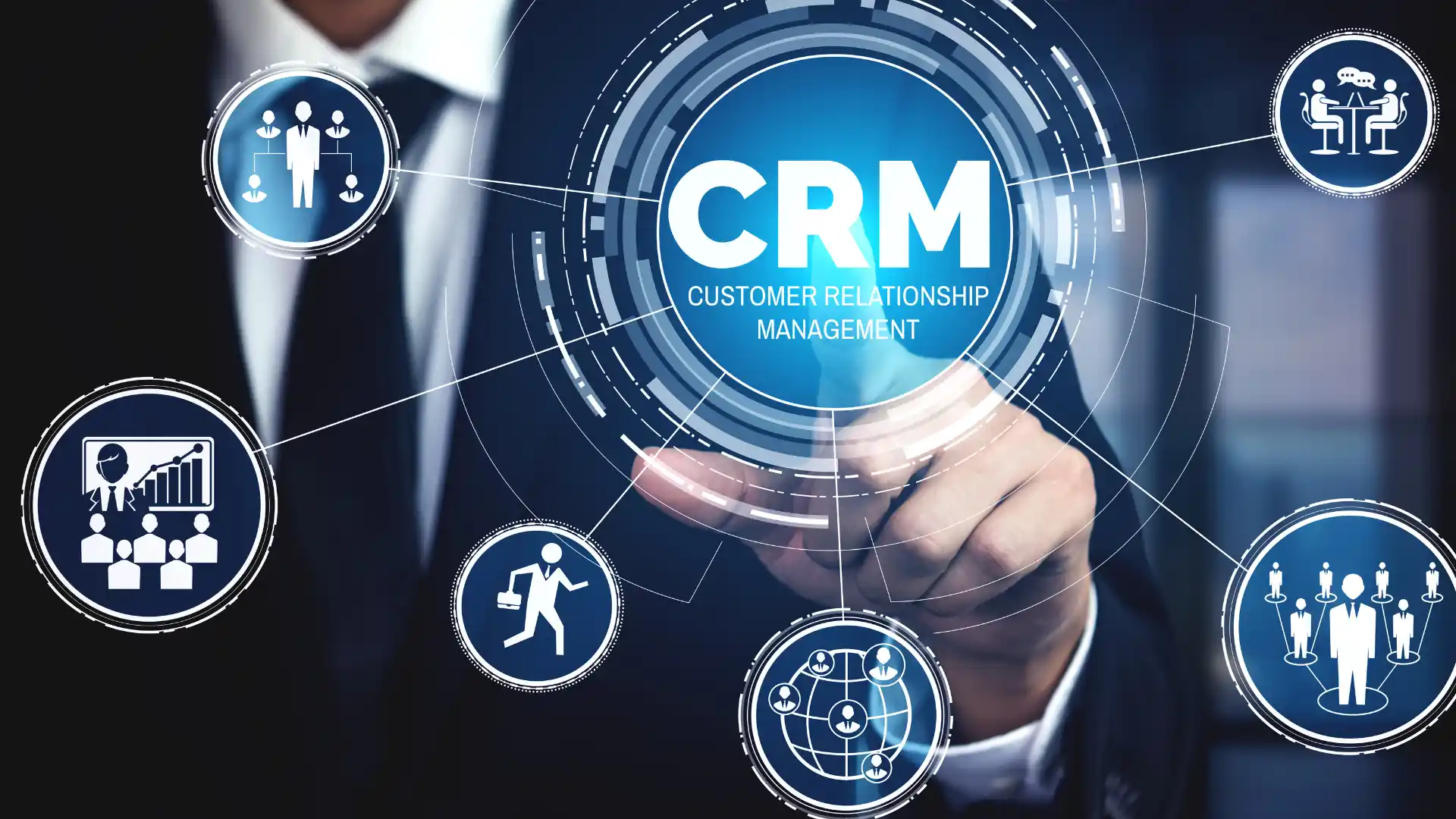Educational institutions face various challenges in the modern digital age. Customer Relationship Management (CRM) systems emerge as crucial tools to help jump over these hurdles. They enhance communication, simplify processes, and optimize interactions with stakeholders—students, parents, faculty, and administrative staff. Recent stats show that 78% of educational institutions have already integrated a CRM system to help streamline processes. A well-implemented CRM system significantly contributes to an educational institution’s success. However, some stakeholders are reluctant to engage with CRM systems due to concerns about complexity and useability. By implementing effective strategies in CRM technology, institutions can establish stronger connections, promote transparency, and create an environment conducive to academic excellence.
Importance of CRM in Education
At its core, CRM in education streamlines various processes by offering a centralized hub for managing student information, interactions, and feedback. This concentrated approach ensures that all stakeholders contribute to and benefit from the shared goals within the educational institution. By providing a comprehensive overview of student progress, engagement levels, and administrative tasks, CRM systems allows educators to make informed decisions. Moreover, owing to the data-driven culture of CRM, institutions are equipped to analyze trends and identify areas for improvement. As educational institutions continue to navigate the complexities of EdTech, the role of CRM becomes increasingly indispensable for those aspiring to achieve operational excellence.

Challenges for CRM Stakeholder Engagement
- Resistance to change: Educators and staff may be accustomed to existing processes, creating a reluctance to adopt new technologies. Familiarity with existing processes may breed skepticism about the benefits of change, particularly in adopting CRM systems.
- Lack of training: Insufficient preparation regarding the functionalities, navigation, and integration of the CRM system leads to an ineffective use of the platform. Inadequate training programs often result in a gap between the system’s capabilities and the user’s ability to harness them. This lack of proficiency can be particularly pronounced when the latest updates or features are introduced, as users may not be adequately equipped to adapt to changes.
- Privacy concerns: Anxieties among stakeholders may arise regarding the protection of their personal and sensitive information. Ambiguities in privacy policies and a lack of transparent communication about how data is stored, accessed, and protected exacerbate these concerns.
- Insufficient technological infrastructure: A lack of adequate technological resources hampers the institution’s ability to fully leverage the software’s capability. Resources such as hardware may be insufficient to support the CRM’s demands. As a result, issues in performance arise and demotivate stakeholder engagement.
- No feedback mechanism: The absence of structured channels for stakeholders to provide input or express concerns can also lead to a lack of engagement. This lack of insight limits the institution’s ability to refine the CRM system based on user experience,
Strategy 1: Comprehensive Staff Training
Providing thorough and targeted training programs is essential for educational institutions to ensure that staff gain the necessary skills to utilize CRM effectively. This strategy addresses knowledge gaps, reduces resistance to technology adoption, and enhances confidence in accessing the CRM’s features. By encouraging staff to leverage the system’s capabilities, users would feel more confident in using the program. Through continuous education, institutions promote a culture of proficiency. Ultimately this optimizes its use for improved communication, collaboration, and data management. The University of Massachusetts took an employee-centric approach in introducing CRM to their administrative departments. This reduced the friction for the employee journey and simplified the digital experience for all stakeholders.
Strategy 2: Phased Implementation
The gradual rollout of the CRM into manageable phases is important in reducing the overwhelming sensation that users might face when adopting a new system. Starting with key functionalities and involving stakeholders at each stage creates a sense of ownership and familiarity. This approach allows for continuous feedback, ensuring the system aligns with users’ needs. It minimizes resistance by avoiding abrupt changes and allows stakeholders to adapt gradually. Bluetree Pte. Ltd. in Singapore implemented a CRM solution with a phased roll-out in segments to prevent the overwhelming effect that stakeholders might face. This approach allowed stakeholders to become familiar with the system.
Strategy 3: Strong Leadership
At the higher levels, visionary leaders set a tone for change, emphasizing the CRM’s strategic importance in achieving educational objectives. Their commitment filters down, influencing administrators and faculty staff to embrace the CRM as a transformative tool. Through effective communication, leaders articulate the CRM’s benefits, address concerns, and demonstrate its alignment with the institution’s mission. Moreover, leaders provide training and support, ensuring that stakeholders have the necessary skills to navigate and maximize the CRM’s potential.
Strategy 4: Ongoing Evaluation
Regular evaluations allow institutions to adapt the CRM system dynamically, addressing evolving requirements and mitigating resistance to change. By soliciting feedback from stakeholders, educational leaders can identify points of weakness and implement targeted improvements. This strategy promotes transparency and demonstrates a commitment to refining the CRM based on real-world usage and feedback. Therefore, embracing ongoing evaluation, stakeholder engagement is enhanced, and the CRM is viewed as a relevant and valuable tool in supporting educational goals over the long term.
Classter’s Innovative CRM Solution
Classter’s Academic CRM module has significantly impacted the way educational organizations manage their operations and engage with stakeholders. This system aids in digitalizing all administrative and academic processes, ensuring a more streamlined and efficient workflow. A notable example of its successful implementation can be seen in the case of MCAST, an educational institution that utilized Classter’s all-in-one cloud solution. This integration helped MCAST connect various operational aspects, demonstrating the CRM module’s effectiveness in enhancing institutional management and stakeholder engagement. The use of Classter’s CRM in education exemplifies the growing trend towards digitization in the academic sector, offering a comprehensive solution to complex administrative challenges.
Prospects for CRM in Education
Anticipating the future of CRM in educational institutions shows a universe rich with technological trends and comprehendible innovation. One prominent case is the integration of artificial intelligence and machine learning with CRM. Furthermore, the increase in mobile CRM applications shows great potential for easier access among stakeholders, thereby improving communication and engagement. Blockchain technology is poised to revolutionize data security and integrity within CRM, ensuring transparent and tamper-proof records. Moreover, the emergence of predictive analytics enables institutions to foresee trends, enabling proactive decision-making. As education continues to embrace digital transformation, the future of CRM lies in its adaptability to evolving technologies, promising a more interconnected, data-driven, and responsive educational ecosystem.
FAQ’s
CRM systems in educational institutions streamline communication, simplify processes, and optimize interactions with stakeholders such as students, parents, faculty, and administrative staff. They provide a centralized hub for managing student information, interactions, and feedback.
Classter’s Academic CRM module is an innovative solution that aids in digitalizing administrative and academic processes in educational institutions. It ensures a more streamlined and efficient workflow, enhancing institutional management and stakeholder engagement.
Classter’s CRM solution stands out due to its comprehensive features, user-friendly interface, and successful implementations in educational institutions. It enhances stakeholder engagement, promotes transparency, and streamlines administrative processes.

